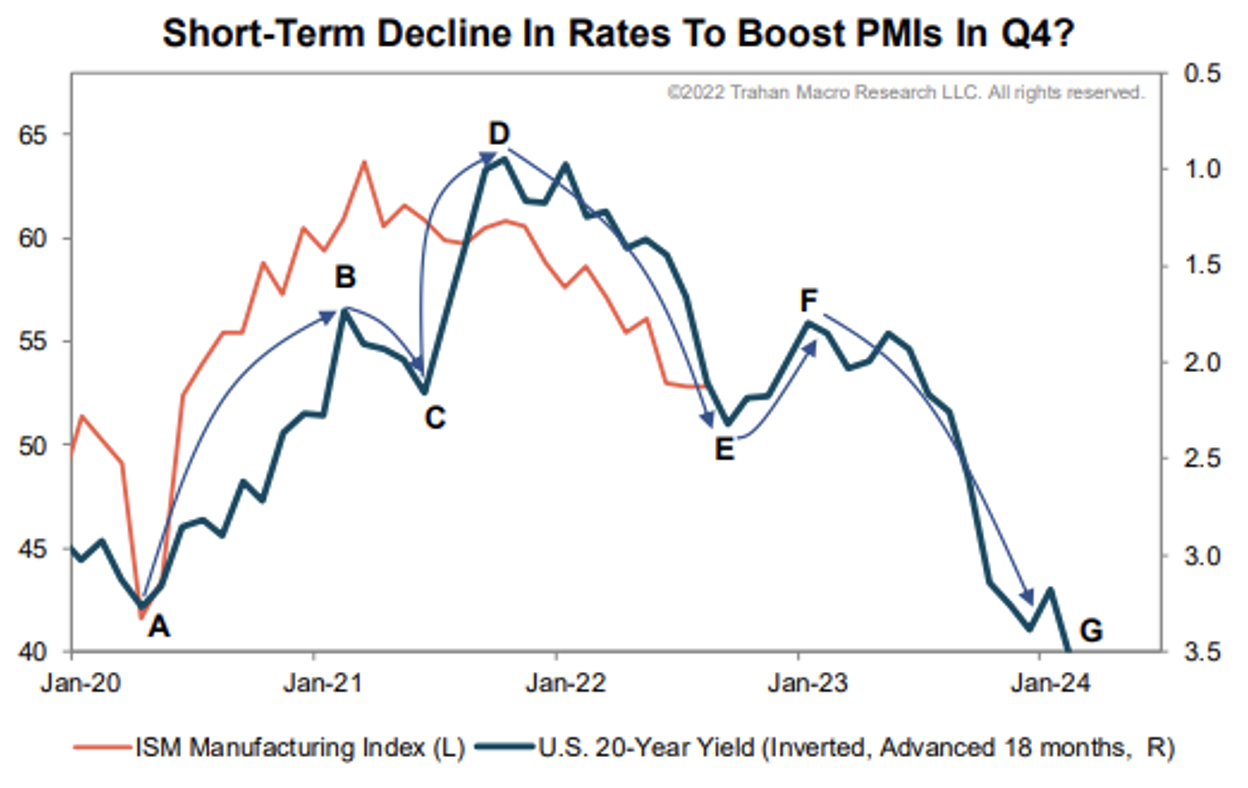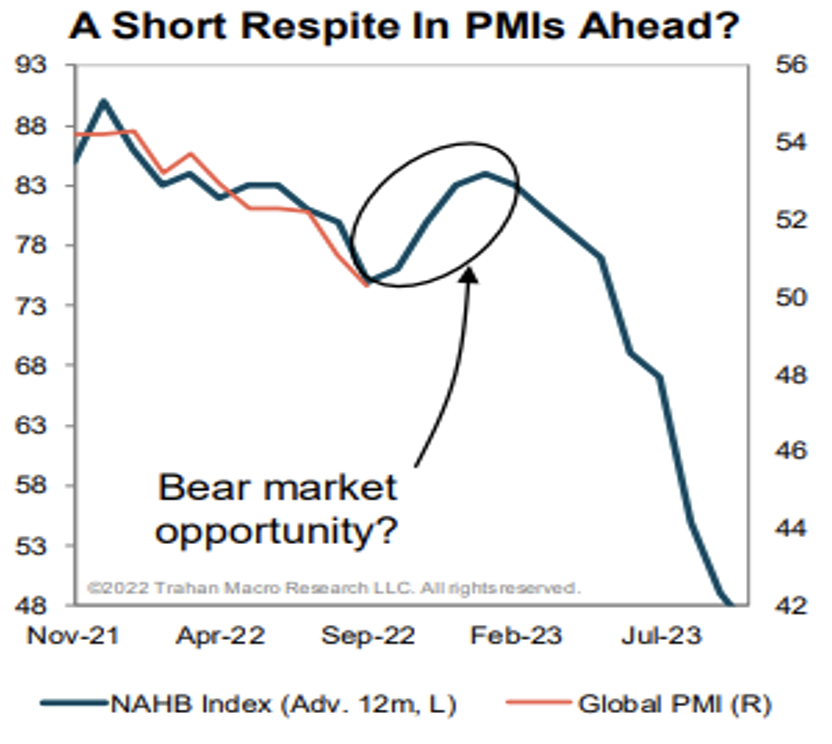How to outperform the next bear market rally
It came to me just yesterday that I ask far too many questions - an attribute that is consistently lauded in journalism but often lands me in hot water.
Sometimes, you receive an unpalatable answer (like the time I found out how much butter is actually used in restaurant food - or that fund managers' personal portfolios can be very different to the ones they are pushing).
Or perhaps, you'll press for a response that the person on the other side of your annoyingly inquisitive behaviour wasn't ready to share (like the time I outed not one but two newly pregnant friends).
After all, as the saying goes, it was curiosity that killed the cat.
But there are some questions worth asking. Let's face it, this year has been painfully volatile, and there have been more bear market rallies or "dead cat bounces" than I can bear to count.
So in this wire, I've called on the expertise of two market masters - Watermark Funds Management's Justin Braitling and Tribeca Investment Partners' Jun Bei Liu - to answer the five questions that are actually worth asking right now.
And by asking them, hopefully, you'll learn as much from this piece as I did.


Ok, so markets have once again sold off following the Fed’s latest hike. The S&P/ASX 200 isn’t officially in bear market territory, but US indices are. Is there more pain on the horizon for Aussie stocks?
Well, Liu believes that Australian stocks will continue to outperform their global peers over the months ahead - so while there may be further losses, they should be far less than those suffered by global equities.
"This is due to the unique composition of the Australian index," she explained.
"Our index is heavily dominated by energy, material and financial companies which are beneficiaries of inflation and higher interest rates instead of expensive technology businesses."
Braitling agreed, arguing the Australian market has escaped relatively unharmed thanks to large exposure to "mature businesses", rather than the "growthier" businesses leading the NASDAQ or S&P 500.
This is because, "when interest rates rise, the value of the shares of growth companies will fall by more than the value of shares of mature businesses because more of the value of a growth company is in the future," Braitling explained.
He believes the sell-off we have witnessed locally needs to be considered from both sides of the equation.
"Rising longer-term interest rates have impacted valuations and rising short-term interest rates have impacted the profit outlook," he said.
"When thinking about the relative performance of Australian shares it is useful to consider these separately."
Of course, the first phase of 2022's bear market has been valuation-driven, Braitling said, with shares becoming more expensive (relative to bonds) as long-dated interest rates rise with inflation.
"This has manifested in a reduction in the market P/E," he said.
"While this valuation measure has fallen sharply, it is still above historic levels for Australian industrial shares and certainly above bear market lows. So, while the P/E can still fall further, a large part of the adjustment in valuation has occurred."
The second factor impacting local shares is the impact of these rising rates (both long and short-term) on business activity and corporate profits, Braitling added.
"Because inflation is not as acute in Australia, the tightening of financial conditions has not been as extreme as elsewhere," he said.
"Furthermore, we have stabilising factors playing that should support activity in Australia. In a nutshell, Australia should experience a milder downturn than other advanced economies along with the associated impact on corporate profitability."
After all, the Reserve Bank of Australia (RBA) seems to have already started the process of slowing its rate rise cycle, Liu said, having recently lifted rates by 25 bps instead of the 50 bps many market participants expected.
"Combine reasonable albeit slowing corporate earnings growth with a stabilising interest rate outlook, and we expect the Australian market to continue to outperform its global peers," she said.
But what even is a bear market rally?
Liu defined a bear market rally as a "short-lived rally in between long bear markets", often triggered by "technicals and extreme investor positioning."
"These rallies are often dangerous as it draws out dip buying behaviour and then crushes short-lived optimism," Liu said.
But what kind of bear market are we navigating now? Well, Braitling explained that asset markets usually move between both the business cycle (approximately four years) and longer-term secular trends (10 to 15 years).
"The business cycle typically plays out over a four-year period in response to adjustments in policy settings, and the share market more or less mirrors this," he said.
"We are currently in a ‘cyclical bear market' as policy is tightened."
Meanwhile, the post-GFC period can be considered a "secular" cycle - one characterised by deflation and liquidity injection (QE), Braitling said, ultimately moving interest rates lower and asset values higher.
"In the 13-year secular bull market, we had three clear and discrete business cycles of roughly four years each," he said.
"We believe with the emergence of inflation along with unsustainable debt balances, we are now in a new secular bear market where shares and other asset classes move sideways for years to come."
That's not to say you should give up completely on investing. While, yes - the primary trend is lower in a bear market, sometimes shares are oversold. This is where bear market rallies come in.
"As with most corrective measures, they often play out in an A-B-C pattern," Braitling explained.
"The first leg peaked in mid-August (A) and then bottomed at the end of September with a test of the prior low (B). The final leg of this corrective rally (C) will play out in the months ahead into the seasonal strong year-end period."
There are good fundamental reasons for these rallies, Braitling added.
"In the current setting, investors have started to anticipate some softening in forward guidance for interest rates (central banks have done enough). We saw this with our own RBA increasing the target rate by less than expected in October," he said.
"We may also see some short-term stabilisation in the economic data in the months ahead which would be a positive surprise given pervasive bearish sentiment. Monetary policy operates with a lag of 12-18 months. And US longer-dated interest rates actually fell sharply in Q2 of last year following the Fed’s ‘transitory’ comments on inflation."

With this in mind, Braitling believes we could see some short-term improvement in leading indicators in the months ahead. In the chart above, the ISM is overlayed with longer-term interest rates (lagged by 18 months). This could suggest that data may improve in the short term, he adds, as seen in E-F in the chart above.
Meanwhile, the chart below shows this is occurring in the US housing market, Braitling said.
"This is the pointy end of the economy where approvals kicked up in response to these lower rates a year ago. This should lead to a modest uptick in housing completions in the months ahead given the lags," he said.
"China, the world’s second-largest economy will also see a sequential acceleration in activity into year-end from very depressed levels as housing activity stabilises and stimulus measures take hold."

Which strategies, sectors or stocks should I turn to when a bear market rally is headed south?
So far, we have witnessed growth sectors and/or the country's most shorted stocks outperform during these bear market rallies, but which stocks, sectors or strategies best outperform when they turn?
Unfortunately for the "growthier" investors out there, Braitling believes the improvements in the share prices of these stocks will be "short-lived".
"Given the lags in the economy, the real impact of the tightening in financial conditions will be felt next year F-G in the first chart above," he said, with the "primary market trend to resume next year as advanced economies start to slow quickly from Q2 2023."
"Hedging strategies" are Braitling's safest bet to navigate the next few months. However, if you can't hedge and you can't sell out of your shares for cash, he recommends investors hide in defensive sectors like consumer staples, utilities, healthcare and telecom.
"Bond yields should also be falling next year as the economy slows and inflation pressures abate so bond proxies such as infrastructure, real estate and utilities should also outperform," he said.
Liu is also backing defensive sectors and stocks to outperform during these periods of market weakness.
"During this cycle, however, things are a little different, due to the energy crises and global push for electric vehicles, with both the energy sector and Lithium stocks both performing incredibly well," she said.
"In fact, the share prices of coal companies are all trading at all-time highs, far outperforming any other sectors."
Which strategies, sectors or stocks should I turn to when the market rallies?
Braitling believes that we will see a rally into the year-end - one led by cyclical sectors (as these have been heavily impacted by rising rates), as investors pray for a peak in long-term interest rates.
"If we also get some reprieve in the economic data, this provides further support for cyclical shares," he said.
"Be careful though, this will prove a false start, these sectors will underperform as the global economy slows next year."
Meanwhile, Liu also points to oversold sectors as winners during bear market rallies - including growth stocks, technology, consumer discretionary, housing and REITs - all of which have been the worst performers over the last 12 months, she adds.
So how the bloody hell am I meant to preserve capital AND generate returns in this environment?
Great question. Well, Liu believes it's important to stick to your knitting. Continue to analyse the fundamentals of your investments, their franchise and their longer-term prospects. As always, valuation is important.
"Don’t chase sharp rallies, often these are driven by FOMO, not fundamentals," she said.
"There is one sector that will fare well in this environment regardless of the macro outcome, and that is Healthcare."
Liu believes this sector will continue to deliver defensive growth over the next few years, as we face a harsher economic reality. Plus, valuations remain attractive within this sector, she adds.
Meanwhile, Braitling believes equity investors should be defensively positioned.
"Reduce your exposure to banking and mining shares," he said.
"As we get closer to a downturn, banking shares will come under pressure. They have performed reasonably well to date because they benefit in the short term from rising interest rates as analysts have raised profit expectations.
"But eventually, higher interest rates will become a headwind as financial stress rises and banks suffer credit losses."
Meanwhile, mining shares are incredibly cyclical, Braitling explained. And while China could see some improvement in the short term, the demand for commodities will weaken over the coming years as the developed world's economies slow.
Want more content like this?
Well, lucky you. This is the first in a three-part series featuring Justin Braitling and Jun Bei Liu. You'll also be learning about the impact of sentiment on markets, as well as signals (and stocks) to watch when markets pivot.
As always, if you enjoyed this wire, hit the 'like' button to let me know. It really makes my day.
And you can stay up to date with my content by hitting the 'follow' button below. You'll be notified every time I post a wire.
Not already a Livewire member? Sign up today to get free access to investment ideas and strategies from Australia’s leading investors.
3 topics
2 contributors mentioned

